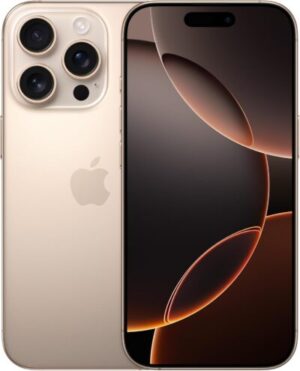The iPhone 16 Pro is a popular choice for users in Dubai Hills, known for its advanced features and high-quality display. For those facing issues with their LCD screens, professional repair services are readily available and can restore the device to its original condition. Quick and reliable repairs can minimize downtime, ensuring that users can quickly get back to enjoying their iPhones.
When searching for LCD repair options, it is essential to choose a service that employs skilled technicians and high-quality parts. With various repair shops scattered throughout Dubai Hills, finding trustworthy and efficient services can make a significant difference in the repair experience. Users should prioritize establishments that offer warranties on their work, providing peace of mind alongside quality service.
Investing in professional repair not only enhances the device’s performance but also extends its lifespan. For iPhone 16 Pro users, understanding the benefits of timely screen repairs can lead to better maintenance and satisfaction with their device.
Understanding iPhone 16 Pro Screen Technology
The iPhone 16 Pro utilizes advanced screen technology that enhances user experience. Key aspects include the type of display, touchscreen capabilities, and resolution, all of which contribute significantly to performance.
OLED vs LCD: What’s in Your iPhone 16 Pro
The iPhone 16 Pro features an OLED display. OLED screens provide richer colors and deeper blacks compared to LCD technology, which uses a backlight. This difference results in greater contrast and improved energy efficiency.
With OLED, each pixel emits light independently, leading to vibrant images and sharper details. In contrast, LCDs have limited color depth and can struggle in direct sunlight. For users prioritizing visual quality, the iPhone 16 Pro’s OLED is a major advantage.
Touchscreen Capabilities and 3D Touch
The touchscreen technology in the iPhone 16 Pro supports multiple gestures. It responds to a light touch, swipe, and pinch, enabling fluid navigation. The device incorporates capacitive sensors that detect electrical properties of the user’s finger, providing precise interaction.
Apple’s 3D Touch is not featured in the iPhone 16 Pro, but Haptic Touch substitutes this capability. Haptic feedback enhances the experience by providing tactile responses, allowing users to feel interactions with the screen. This feature enhances accessibility and enriches everyday usage, making user engagement more intuitive.
Screen Resolution and Display Quality
The iPhone 16 Pro boasts a resolution of 2556 x 1179 pixels. This high resolution delivers sharp text and detailed images, critical for photography and media consumption.
Additionally, the device supports HDR (High Dynamic Range), enhancing brightness and contrast in videos and images. Users can expect true-to-life colors and details in every frame, especially when watching high-quality content. The combination of resolution and HDR support ensures an exceptional viewing experience, suitable for both entertainment and professional use.
Common Issues with iPhone 16 Pro Screens
The iPhone 16 Pro screen can experience various issues that may hinder functionality. Understanding these problems can help users identify symptoms and seek timely repairs.
Cracked or Shattered Screen
A common issue users face is a cracked or shattered screen. This often occurs due to accidental drops or impacts. Physical damage can affect not only the display but also the underlying components, leading to further complications.
Repairing a cracked screen typically involves replacing the entire display assembly. Users should consider professional services in Dubai Hills to ensure quality repairs. DIY attempts can worsen the damage or void any warranties.
Dead Pixels and Color Distortion
Dead pixels can appear as small black dots on the screen. These pixels do not respond to touch or display any color, disrupting the visual experience. Color distortion can also occur, leading to inaccurate color representation.
These issues often stem from defects in the LCD panel itself or damage during impact. Regular checks can help identify these problems early. Addressing them promptly can prevent additional screen damage.
Touchscreen Responsiveness Problems
Touchscreen responsiveness issues can arise from various factors, including software glitches or hardware problems. Users may notice unresponsive areas on the screen, making navigation difficult.
In many cases, a simple restart can resolve software-related touchscreen issues. If problems persist, hardware inspection is necessary. Faulty connectors or a damaged digitizer may require professional repair to restore full functionality.


